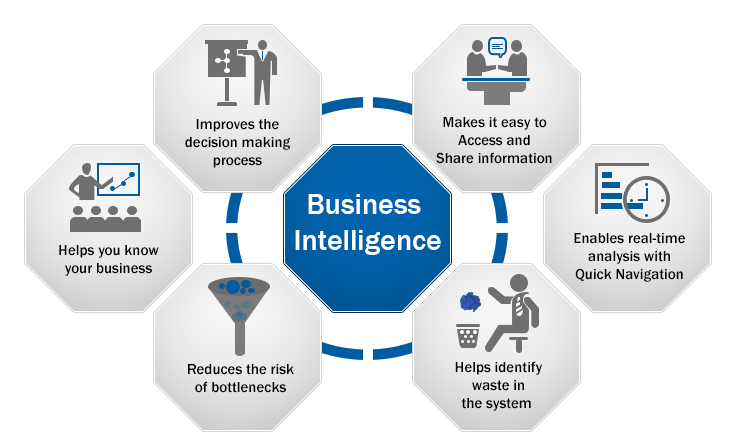Business Intelligence is a technology that transform raw data into meaningful and useful information for business purposes. BI can handle enormous amounts of unstructured data to help identify, develop and otherwise create new opportunities. Making use of new opportunities and implementing an effective strategy can provide a competitive market advantage and long-term stability.

Generally, Business Intelligence is made up of an increasing number of components, these are:
Analysis of data is a process of inspecting, cleaning, transforming, and modeling data with the goal of discovering useful information, suggesting conclusions, and supporting decision making. Data analysis has multiple facets and approaches, encompassing diverse techniques under a variety of names, in different business, science, and social science domains.
Business intelligence covers data analysis that relies heavily on aggregation, focusing on business information. In statistical applications, some people divide data analysis into descriptive statistics, exploratory data analysis (EDA), and confirmatory data analysis (CDA). EDA focuses on discovering new features in the data and CDA on confirming or falsifying existing hypotheses. Predictive analytics focuses on application of statistical or structural models for predictive forecasting or classification, while text analytics applies statistical, linguistic, and structural techniques to extract and classify information from textual sources, a species of unstructured data.

